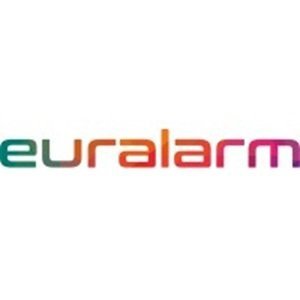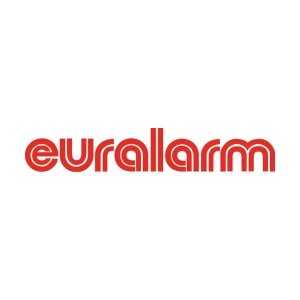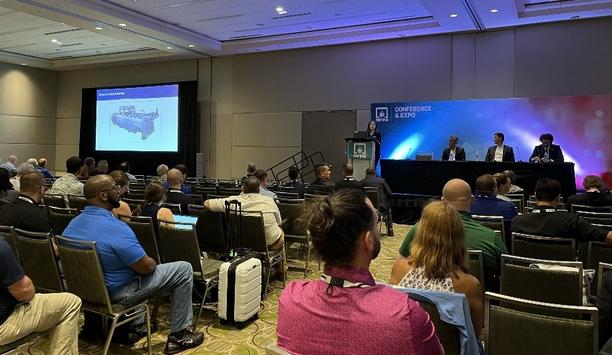Euralarm - Experts & Thought Leaders
Latest Euralarm news & announcements
The Task Group Domestic Life Safety of Euralarm has issued a new guidance document on fires caused by unattended cooking and how to avoid them. Many residential fires start in the kitchen and/or are related to cooking. In Europe, the Zurich insurance company mentions cooking equipment as first in an overview of common causes of house fires. New guidance document The new guidance document on fires caused by unattended cooking and how to avoid them In the USA, where the NFPA has actively researched home structure fires, reports show cooking to be the leading cause of home fires and fire injuries, as well as the second highest cause of fire deaths and direct property damage. The new guidance document on fires caused by unattended cooking and how to avoid them provides a comprehensive analysis of stove guards as an effective tool to prevent fires in residential environments. Role in mitigating fire risks In this document, the technical functionalities, the role in mitigating fire risks, and the regulatory frameworks governing stove guards across the European Union are examined. The document highlights the growing trend of mandatory adoption in EU member states and outlines the safety, economic, and societal benefits of widespread implementation. This guidance document aims to act as a guiding document for advancing fire safety measures and ensuring their widespread adoption for the benefit of society. Copies of the guidance document can be downloaded from the Euralarm website.
With the rapid rise of digitization, cloud computing, big data, artificial intelligence and the Internet of Things, data centers are becoming increasingly important. The expensive equipment deployed in data centers, the high economic importance and the often irreplaceable data make fire protection for data centers crucial. A new Euralarm guidance document provides insight on aspects to consider and some of the options available when protecting data centers. The document is now available in English, German, and Spanish language. New Euralarm document New Euralarm document will aid in the understanding of how protection objectives can differ, client to client The new Euralarm document will aid in the understanding of how protection objectives can differ, client to client, region to region, and assist in the practical application needed for any specific circumstance. There is no one-size-fits-all, but this will allow insight as to the differences to establish what is optimum for the reader. Importance of fire protection The guidance document is written for data center designers, operators and those providing fire protection to this type of application. It is presumed the reader knows the importance of fire protection and is seeking clarity about the implications of one solution over another. It, therefore, covers not only standards and regulations but provides insight on aspects to consider and some of the options available when protecting data centers. fire protection approach Guidance will not explain the difference between a Tier I or Tier IV data center but will identify issues For the various technologies (sprinkler, water mist, gaseous, oxygen reduction systems, condensed aerosols), the paper indicates their suitability at different stages of a fire incident. This guidance will not explain about the difference between a Tier I or Tier IV data center but will identify issues that might arise if one fire protection approach is selected over another. It is intended to help the reader understand what is relevant to them and their specific application. Requirements of building and life protection By leveraging this guidance, stakeholders can ensure that their data centers are not only compliant but optimally protected against fire hazards. The reader will understand the different options to be considered, beyond the local minimum requirements of building and life protection, or that of limiting asset damage. The concepts that are introduced in the document, help formulate an appropriate business continuity plan.
Euralarm has published a White Paper on multi-sensor fire detectors and how these devices can help to reduce false alarms. The document is intended for fire safety professionals, building managers, and regulatory authorities. Fire detection is a critical component of building safety systems in residential, commercial, and industrial settings. It is aimed at early identification and alerting of fire incidents to minimize damage and save lives. Non-fire-related particulates Traditional fire detection systems, typically based on smoke, heat or flame detection, each have their strengths but also limitations. Smoke detectors can be triggered by non-fire-related particulates, heat detectors may respond too slowly, and flame detectors are often limited to line-of-sight applications. This means that each signal characteristic (e.g., amplitude, frequency) is processed independently These traditional detectors use independent signal processing: they analyze each signal or each feature of the signal independently, without integrating the information from various sources or criteria. This means that each signal characteristic (e.g., amplitude, frequency) is processed independently. Multiple sensing modalities Multi-sensor fire detectors address the limitations of single-criteria detectors by combining multiple sensing modalities. This integrated approach improves detection accuracy, reduces false alarms, and achieve a faster response to actual fire events. The new Euralarm white paper explores the development and use of multi-sensor fire detectors. These advanced sensors integrate multiple detection technologies to enhance reliability, accuracy, and response times, thereby improving overall fire safety.
Insights & Opinions from thought leaders at Euralarm
Thousands of industry professionals gathered at the 2024 NFPA Conference and Expo in Orlando in June. The event brought together educational sessions, networking opportunities, and an exhibitor showcase. NFPA is the National Fire Protection Association. The NFPA annual meeting allowed members and the public to discuss and vote on proposed changes to fire codes and standards. “It’s a gathering place for people in the industry,” says Dr. Rodger Reiswig, Vice President of Industry Relations at Johnson Controls. “You can walk around the floor and observe the trends, see what people are talking about, and view industry trends through a clear set of eyes.” New Foundation Series As vice president of industry relations, Reiswig acts as Johnson Controls’ liaison with the NFPA, works with NFPA technology committees, and serves on the Standards Council that oversees more than 300 NFPA codes and standards documents. Foundation Series is a complete family of fire alarm control units and peripheral devices At the NFPA Conference and Expo in Orlando, Johnson Controls provided “spotlight” seminars at their exhibit booth and highlighted products and services including interactive tools, inspections, remote services, restaurant systems, and the new Foundation Series Fire Safety Solution for the protection of small to mid-size buildings. The Foundation Series is a complete family of fire alarm control units and peripheral devices. NFPA’s codes and standards In addition, Reiswig attended seminars and Standards Council sessions. Technical sessions covered codes and standards that are currently “in cycle” (i.e., in the process of being updated). In a technical session on the last day of NFPA, anyone could attend to suggest changes and garner support from others on various changes. Consensus is a core principle of NFPA’s codes and standards. “This is a chance for everyone to participate, whether your interest is in roofing materials, how buildings are built, or life safety systems,” Reiswig adds. “Codes tell us when to do something, but standards tell us how to do it. If the occupancy standard says put in a fire alarm, the NFPA standard tells you how to do that.” Anyone at any level in any role or discipline can participate. new NFPA 915 Standard Fire alarm and life safety have yet lagged industry sectors when it comes to remote connectivity “Technology is changing rapidly, and the type of construction is different than 20 or 30 years ago. Use of new tools and materials in buildings is changing how much time I have to escape smoke or fire,” Reiswig says. “New construction materials allow fires to happen quickly, spread faster, and give off toxic chemicals. Tighter buildings ensure energy efficiency, but they allow less ventilation, so carbon monoxide can accumulate faster.” A common theme at the show was remote connectivity, highlighting the new NFPA 915 Standard for Remote Inspections, which guides new technologies to enable remote access and testing of life safety systems. Fire alarm and life safety have previously lagged other industry sectors when it comes to remote connectivity, but the new NFPA 915 standard opens new possibilities, and vendors at the show were promoting remote capabilities and inspections. develop safeguards and capabilities NFPA 915 Standard sets need for performing remote inspections safely and effectively The NFPA 915 Standard establishes requirements for performing remote inspections safely and effectively. It addresses various types of remote inspections. The standard also defines the responsibilities of various parties involved in a remote inspection, such as the inspector, property owner, and authority having jurisdiction (AHJ). The standard covers data collection procedures, data security, and data ownership. Overall, the standard helps to ensure that remote inspections can be conducted in a way that meets safety requirements. In effect, NFPA 915 gives the green light to manufacturers and Underwriters Laboratories (UL) to develop safeguards and capabilities to log into life safety systems remotely. The approach can help to simplify inspections, which can be performed remotely or with only one technician required on-site rather than two. Requirements include how systems communicate, the cybersecurity and credentials required, and the prevention of outside connections. Beyond fire alarms, the standard also allows other remote inspections, such as using a drone in a large warehouse to inspect sprinkler heads. Real-time information and instructions Inspectors are not allowed into buildings such as nursing homes and clinics to check their safety systems NFPA 915 was being considered before the COVID pandemic, but the business shutdowns and social distancing requirements during the worst of the pandemic increased awareness of the needs and benefits of remote inspections. During COVID, inspectors were not allowed into buildings such as nursing homes and hospitals to inspect their life safety systems. Remote access and inspections became critical, thus raising awareness of the feasibility of remote inspections that continue to drive their adoption. Another area of interest in NFPA was mass notification systems, which have matured a lot since they were introduced into the NFPA code in 2007. It’s easier than ever to provide real-time information and instructions to people in an area. Connectivity among fire alarm systems inside buildings, digital signage, and other life safety systems are promoting better notification. Area of refuge systems A new area of discussion and product development is “area of refuge” systems that complement Americans with Disabilities (ADA) requirements in buildings. In a high-rise building, for example, if the elevators are disabled, it may be impossible for a person using a wheelchair to evacuate. Instead, there are designated “areas of refuge,” which are rated to provide two hours of protection from fire. New notification systems can communicate with first responders about occupants in these areas. The NFPA conference increasingly incorporates a global presence, encouraging more collaboration among entities, countries, and associations about needs around the world. Manufacturers can work together through various associations including the Automatic Fire Alarm Association, Euralarm in Europe, and others. “Life safety is worldwide, and fires may be the same or different in various areas,” says Reiswig. “We need to remember that standards are not just for the United States because people are active from other countries.”
The biggest causes of false fire alarms are older technology and systems that are improperly designed and/or not maintained. Modern technology, proper design and regular maintenance can minimize false alarms. Systems over 15 to 20 years old do not have the technical means to handle deceptive phenomena. Proper planning, design, installation, commissioning and maintenance should be provided by firms certified for such work as defined in the European Standard EN 16763 Services for fire alarm and security systems. Preventing false alarms False alarms and counterstrategies must be taken seriously by the planner from the beginning of the planning process in the fire protection plan. The prevention of false alarms is also the responsibility of the operators and site managers. There is still a lot of optimization potential. These are some of the observations from the Euralarm False Alarm Study (2019), which looks at the situation in Germany, Austria (Vorarlberg), Sweden, Switzerland, and United Kingdom. To further the reduction of false fire alarms even more, better data is needed to outline and support any measures defined.To further the reduction of false fire alarms, better data is needed to outline and support any measures defined The study also shows that, in some regions, approximately 30% of the false alarms are caused by 5% of the sites. “We have to optimize the planning and application processes,” says Dr. Sebastian Festag, who headed up the research. Euralarm “False Fire Alarms” task group The Euralarm “False Fire Alarms” task group completed a three-year study in 2018 that aimed to identify the actual state of the false alarm issue of fire detection and alarm systems (FDAS), their conditions, main causes and measurements to reduce them. The result of the work is the False Alarm Study (2019), which was the follow-up to a pre-study that led to an observation of the questionable quality and availability of data. The lack of common data and terminologies – as seen in the first study – makes further analysis and the development of prevention strategies difficult. Reducing the incidence of false alarms requires an understanding of the phenomenon and the conditions (terms, data, transmission paths, standards and calculations). Differences and similarities among countries could be used to derive measures to influence the issue and its ratio, but the circumstances between countries are too varied to truly compare. Systems over 15 to 20 years old do not have the technical means to handle deceptive phenomena Comparisons between countries are not possible In the countries that were visited, the Fire Services collected the data. “An observation here is that comparisons between countries is not possible; hence gaining a better understanding through this process today has limits,” says Lance Rütimann, Chairman of the Euralarm Fire Section and member of the Task Group. In the context of fire safety engineering, a false alarm is a fire alarm with no conditions that motivates a fire interventionThe study differentiates between a “real” fire alarm and a false fire alarm. “Real” means that there is a fire alarm with a fire or other conditions that requires an intervention, either by someone in the building or the fire services. “False” alarms are defined as events in which experts establish that there is no real hazard existing. In the context of fire safety engineering, a false alarm is a fire alarm with no conditions that motivates a fire intervention (the alarm is not classified as a real fire alarm; a fire intervention is unjustified). False Alarm Study Lists Counterstrategies One chapter of the False Alarm Study lists an overview of counterstrategies. There are many well-known measures (e.g. two-detector dependency), and technical progress provides new opportunities (e. g. multisensory-detectors) Founded in 1970, Euralarm is an organization representing over 5000 companies within the fire safety and security industry valued at 67 billion Euros. The organization provides leadership and expertise for industry, market, policy makers and standards bodies. Euralarm members make society safer and secure through systems and services for fire detection and extinguishing, intrusion detection, access control, video monitoring, alarm transmission and alarm receiving centers. Euralarm members are national associations and individual companies from across Europe. Not all can be avoided People get annoyed by false fire alarms, which pull them out of what they are doing and force them to evacuate a building. However, it is a misconception that all false fire alarms can be avoided. A fire detection and fire alarm system is constantly monitoring and evaluating the environment in a building. Sometimes what might be perceived as a false fire alarm is in fact an event that was caught in a very early stage. Clearly it is better to be safe than sorry, and to move people to a safe area whilst intervention forces are in action.It is a misconception that all false fire alarms can be avoided False alarms should not be seen as purely negative. A lot can be learned from false alarms; for example, in dealing with vulnerabilities in the technical and organizational alerting process. In general, the number of false alarms is falling, while the number of installed systems is rising, demonstrating that technology works and that false alarm reduction strategies are effective. The number of false fire alarms had declined in all countries in the last years/decades due to optimized technologies. The industry is focusing on the remaining false alarms, some of which are systems that are outdated, no longer meeting site conditions and/or are not professionally maintained.
It can be taken as proven that the trends in urbanization, the mobility of the population and the demographics, have had and will continue to have tremendous impact on our daily lives. These impacts were and are supported by disruptive technology changes (such as the evolution of the internet and mobile communication) and result in higher dependencies of almost all economic and social processes. Compared with former generations, we are spending most of our time in buildings or closed mobile containments/compartments (cars, public transport...), which support us with comfort, efficiency, safety and security. We've learned to extend our social lives through new virtual networks and we've adapted our working style to an almost 24/7 online state. This, and the absence of obvious potential danger, have led to a dismantling of old WWII sirens and to a reduction of capabilities. Close And Intense Co-operation All this makes us vulnerable to unplanned manmade incidents disrupting our day to day life as well as business, routines, and so on. Meanwhile, the well-evaluated research on global warming projects higher risks by an increased number of severe weather incidents for the future. Such past incidents have not spared any geographical or any organizational boundaries, and therefore call for a close and intense co-operation to limit their impact. As a reaction to the past experiences in managing incidents, experts and officers have highlighted the need for better preparedness. This resulted in an intense discussion of potential measures, such as modern public warning systems. With this in mind the European Union and many of its member states have started tests and trials to study new methods that could be used to reach a large number of people in the shortest possible time. SMS and other wireless services, such as cell broadcast messages to mobile phones, are obvious choices. They have already been tested in several countries. But what at first glance seems a surefire, easy-to-implement method proves problematic in view of the fact that only 30 percent of the citizens contacted read the message in real-time. Alert4All Notification System SMS emergency broadcast messages are one method of warning and updating the public of crises in real-time The public warning system was also addressed by several FP7 projects, which have concluded research in this area. One such project was Alert4All, which successfully demonstrated in 2013 a public alerting concept in a clearly defined and emergent danger zone by introducing an enhanced public warning messaging protocol. Messages, based on this protocol, were transmitted via satellite and terrestrial systems to smart phones, tablets, navigation systems and television receivers. Using the Alert4All concept, first responders can stay in contact with the population from the outset of and throughout the crisis. Using the “buzz” from social media networks provides the required input to adjust the communication content. The Alert4All protocol also allows for the translation of alarm messages into the language the receiver normally uses to display information or messages. This means that a Spanish user could read the message in Spanish even while in England. On the other hand, electronic fire safety and security systems have been installed in buildings for more than 50 years. Their purpose is to detect an emerging danger in a building or building complex and notify people in time. These systems have an undisputed track record for saving countless lives by alerting and guiding people to safety in crisis situations. Millions of such systems are installed today in commercial and private buildings Many of them are permanently connected to public and/or private alarm receiving stations. All of them are equipped with devices such as sirens, horns, strobe lights or loudspeakers. They could also be used to alert people of a public danger that might impact buildings or their occupants. PEARS Emergency Response Represented by a Euralarm team, together with the FP7 Alert4All project team, those systems showed their capability to take on a responsible role in public warning during the final demonstration in 2013 as well. Their installed base, their fault tolerance and their positive track record in securing assets and in preventing casualties could make them a perfect asset in the incident preparedness of modern societies, beside other technologies. Above all, civil protection organizations could lever “private” field resources in emergency management and extend the overall resources for big and disastrous incidents. Achieving this requires efforts at all levels and from all stakeholders, e.g. within CEN and within ETSI. Article published courtesy SourceSecurity.com®, a division of Notting Hill Media Limited. View the original article here
The New Future For Fire Agencies
DownloadThe Eight Key Trends in Fire Detection in 2023
DownloadA Digital Platform to Improve Fire Safety Compliance and Inspections
DownloadOvercoming the Challenges of Fire Safety in the Paper Industry
DownloadCarbon Monoxide: Creeping Killer Caught In The Act
Download























